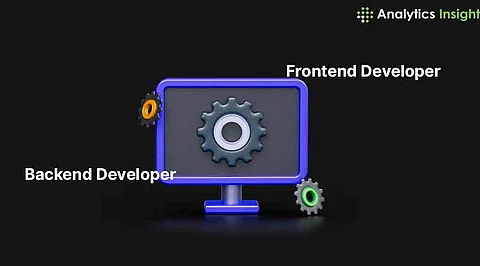

Choosing between backend and frontend development as a career can be difficult. Both are essential in web development but require different skills and offer unique challenges. Technology is changing quickly, making both paths exciting and important. This article explains the key differences, required skills, career options, and factors to help decide which path is best.
Client-side web development is what front-end development is essentially. Essentially, front-end developers handle all of what a person sees and interacts with on a website. This may include layout, design, as well as the interactive parts of a website.
Such can be built in languages like HTML, CSS, and JavaScript visually effective and in user-friendly way. Developers use frameworks like React, Angular, and Vue.js for easier development.
On the other hand, backend development lies on the server side of web applications. From the above conversation, as has been mentioned earlier, it is true that backend developers deal with the underlying logic, database interactions, server configurations, and application integrations.
Languages like Java, Python, Ruby, and PHP differ from frameworks like Node.js, Django, and Spring. Backend developers make sure the server, application, and database work together smoothly so the frontend can function correctly.
1. HTML/CSS: Markup and styling of basic web page
2. JavaScript: Added interactivity and dynamism to the web page
3. Frameworks/Libraries: Will know how to build complex applications by building one of either react angular, or Vue.js.
4. Responsive Design: Building websites to be reactive to a variety of different devices and screen sizes
5. Version Control: Git proficiency in tracking changes and collaboration with other developers
1. Server-Side Languages: Any server-side language such as Java, Python, Ruby, and PHP.
2. Database Management: Knowledge of SQL and NoSQL databases such as MySQL, PostgreSQL, and MongoDB
3. APIs: Know the RESTful and GraphQL API for communication between frontend and backend
4. Server Management: Configuration and deployment of servers
5. Security: Implementation of security controls to protect the data and applications
Demand: A lot of demand because the user experience comes first. Companies also want to hire developers who can make the interfaces intuitive and interesting.
Salary: Payment for a front-end developer is competitive, though this may vary with location, experience, and particular technologies.
Growth: The field has always brought new tools and frameworks that ensure continuous learning in careers.
Demand: This is because server-side programming developments usually tend to be more complicated, thus creating a big demand for such applications that are strong yet scaly.
Salary: The salary for backend developers mostly tends to be very high compared to frontend developers mainly because of the technical complexity their work presents and typically being more critical.
Scalability: The scope for scaling in the backend field is enormous, primarily due to the growth in cloud computing, microservices, and big data.
A leaning for design, user experience, and the general view in which beautiful interfaces are imagined, then frontend development seems a better fit.
Work with data and server logic, complex problem-solving. Here, backend development would seem like a much more demanding call.
Utter sensitivity to design, the perceived behavior of the user which is very hard but extremely rewarding.
Extremely fulfilling as far as problem-solving goes. Server-side languages and database management are rather technologically challenging but well worth the mess.
Both are in demand, but depending on the industry and region, actual needs may have to be addressed. Some local research may give an idea of which role will better be an opportunity.
Long-term career plan. Frontend development will take you to the overall interaction with UI/UX designers, and backend development will take you directly to work with system architects or even with DevOps engineers
A work environment for front-end developers would be more frequent with designers and product managers to result in a nice user interface and experience.
The numbers usually allocated to a backend developer would be amongst the other developers and IT professionals who focus on data management, technical infrastructure, etc.
A person's strengths and career goals determine whether to choose backend or frontend development. Both roles are important in the tech industry. They offer great growth opportunities. Understanding the differences, required skills, and career prospects helps in making the right decision.
